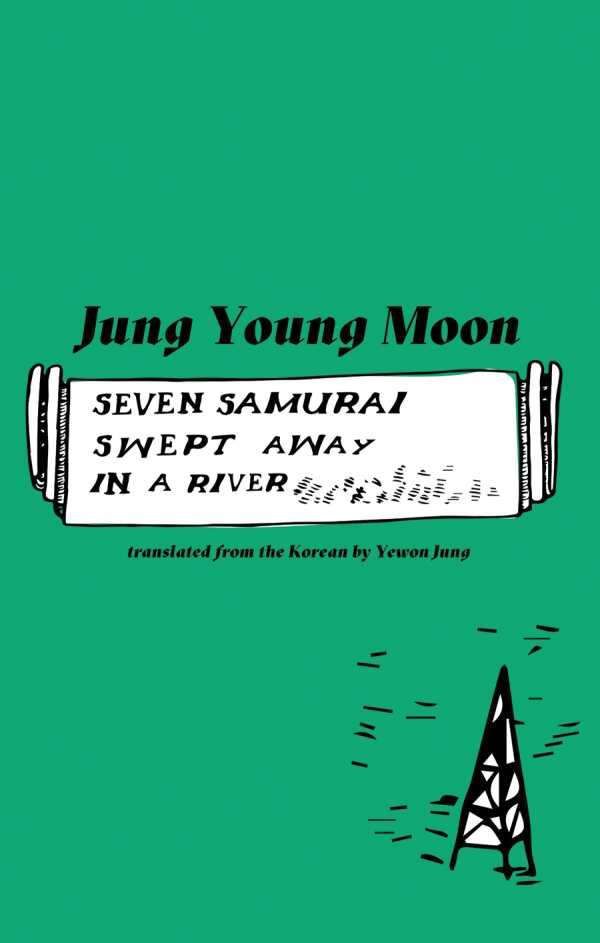Seven Samurai Swept Away in a River
Cult favorite Jung Young Moon’s Seven Samurai Swept Away in a River is a meditation on the nature of existence that’s mediated through the question of what constitutes a novel. It is a “story about Texas, but at the same time, a story that deviates from being a story about Texas.”
Written in a vein of conjecture, this is a hybrid narrative, both a memoir and a work of fiction. It’s a monologue crafted from a cascade of intertwined thoughts. A discussion of chili leads to a contemplation of beans which becomes a story about the origins of tofu that transforms into a factoid about Ben Franklin that reverts back to the role of tofu as Korean prison food which finally mutates into a story about Dallas, dogs, Jack Ruby, Lee Harvey Oswald, and the Kennedy assassination. The book goes on like this ad infinitum with impressive fluidity, with one example giving rise to another like a lucid dream.
Reality is plastic, particularly when it comes to other people, and Moon is fascinated by what people think and how their unknown, unfathomable interiority is expressed in the world. As he traces the cause and effect of such expressions, there’s a suggestion that, in the end, no matter what’s observed, there’s no reality beyond what the interpreter makes of it.
At times an absurdist narrator, at other times stoic, Moon is always in on the philosophical joke. The book does and doesn’t “really have much to say,” and calls itself “a novel that even a passing dog would laugh at.” By embracing this nether space, Moon creates a darkly comic meta-text about the liminality of what we experience and create.
Reviewed by
Letitia Montgomery-Rodgers
Disclosure: This article is not an endorsement, but a review. The publisher of this book provided free copies of the book to have their book reviewed by a professional reviewer. No fee was paid by the publisher for this review. Foreword Reviews only recommends books that we love. Foreword Magazine, Inc. is disclosing this in accordance with the Federal Trade Commission’s 16 CFR, Part 255.

